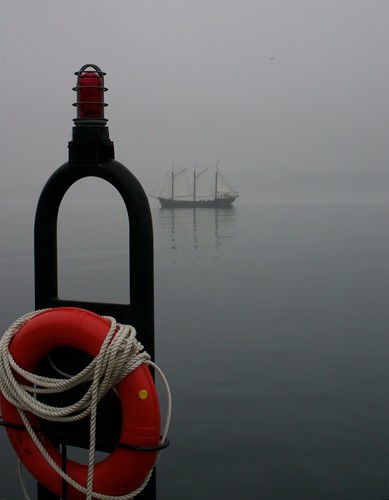The Tall Ships of the World
The Tall Ships of the World
Tall ship
A Tall Ship is a large, traditionally-rigged sailing vessel. There are other types of ships which are not tall ships, but are just sailboats with one mast. An example of this would be a Sloop. To be a Tall Ship, the boat has to have two or more sails. Tall ships have one or more masts. Nowadays nobody uses a Tall Ship for anything but tours, but back in the day they would use them as war ships and merchant ships. They were the life of many a man or woman. Popular modern tall ship rigs include topsail schooners, brigantines, brigs, and barques. "Tall Ship" can also be defined more specifically by an organization, such as for a race or festival.

History
Traditional rigging may include square rigs and gaff rigs, with separate topmasts and topsails. It is generally more complex than modern rigging, which utilizes newer materials such as aluminum and steel to construct taller, lightweight masts with fewer, more versatile sails. Most smaller, modern vessels use the Bermuda rig. Though it did not become popular elsewhere until the twentieth century, this rig was developed in Bermuda in the seventeenth century, and had historically been used on its small ships called Bermuda slopes.
The author and master mariner Joseph Conrad, who spent from 1874 to 1894 on the sea in tall ships, and who is most particular about all naval terminology, uses the term "tall ship" in his works, for example in The Mirror of the Sea, published in 1904-06. If Conrad used the term then, it is fairly certain it was common parlance among his fellow mariners in the last quarter of the 19th century.
Lost tall ships
Tall ships are sometimes lost, such as by a storm at sea. Some examples of this include:
• Bounty, a full-rig ship lost off the North Carolina coast as Hurricane Sandy approached in 2012.
• Concordia, a triple mast Barquentine built in 1992, operated by Canada as a school ship. Lost at sea in 2010 in a squall.
• Asgard II, an Irish national sail training ship, commissioned in 1982, was lost in 2008 off the French coast. The 2-masted brigantine is thought to have collided with a submerged object.
• Fantome, a former yacht built in 1927, then operating as a cruise ship was lost in Hurricane Mitch in 1998.
• Marques, built in 1917, it was lost in a 1984 Tall Ships Race.
The Anatomy of a Tall Ship
Full-rigged ships have three or more masts, all square rigged. Barquentines (or barkentines) have three or more masts, with the foremast square-rigged and the others fore-and-aft rigged. Brigs have only two masts, both of which are square-rigged. Brigantines have only two masts. The foremast is square-rigged, but the aft mast is fore-and-aft rigged. Schooners have two or more masts and may have both fore-and-aft and square-rigged sails. Schooners rigged with three or more masts have spars and rigging of uniform dimensions and scantlings for all masts, except the main boom of the aft mast, which is heavier and longer. Square topsail schooners have both fore-and-aft and square-rigged sails. A topsail schooner can be distinguished by square sails on the foremast, but differs from the brigantine and barquentine by having a gaff sail aloft the foremast. Gaff-rigged schooners have fore-and-aft rigged sails attached to spars that are hoisted up the masts. Staysail schooners have fore-and-aft rigged sails only, but not the large spars found on other schooners. Ketches have two masts, each carrying a gaff-headed or jib-sail. They differ from two-masted schooners in that the larger mast and sail stand foremost, whereas in the schooner the reverse is true. The mizzenmast is stepped forward of the sternpost. Sloops have only one mast.
This is only a partial list of the rigs. If you go online and search for ‘Rigs on tall ships’ then you will have a good chance of learning almost all of them. Maybe you even will learn them all.
There are, approximately, 216 Tall ships that ply the waters of the world. Mostly they are used as tours, but there are also races held for them. Tall Ships sail all over the world.
Photo courtesy and copyright Gabriel Miller



















